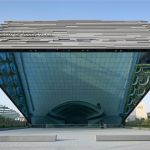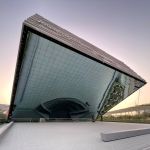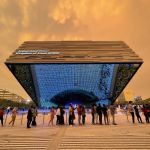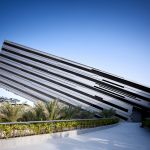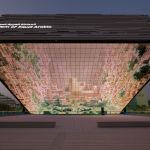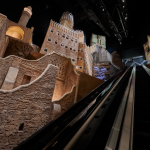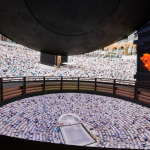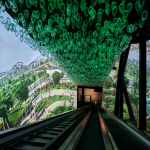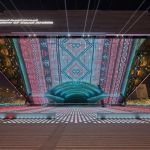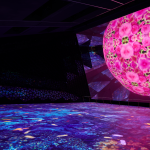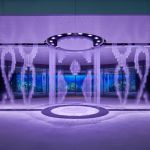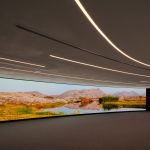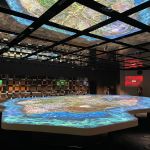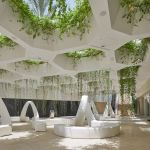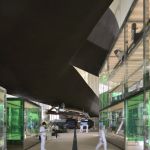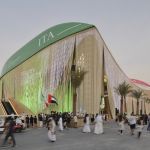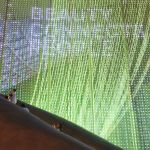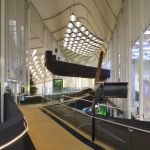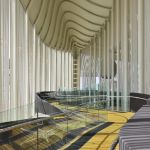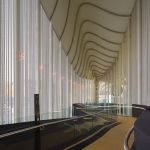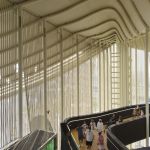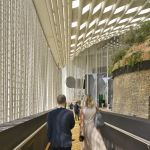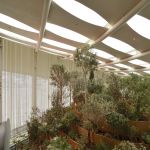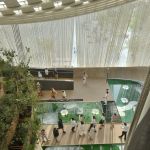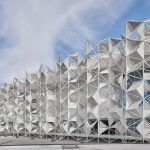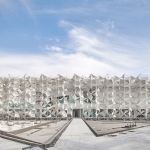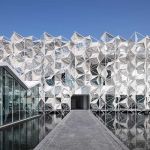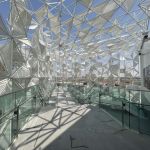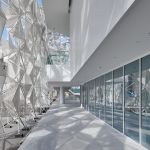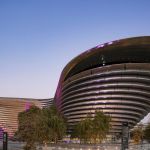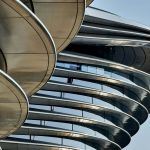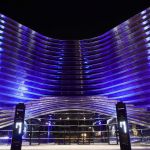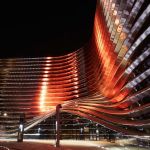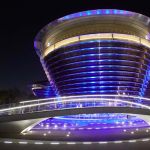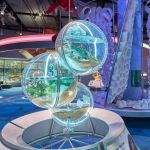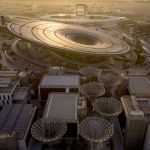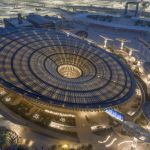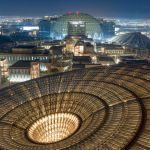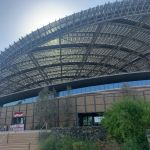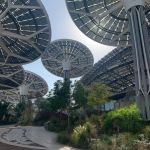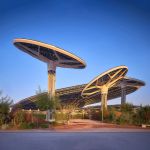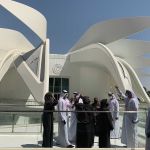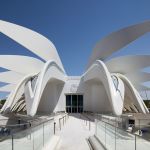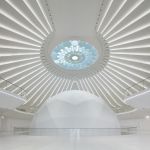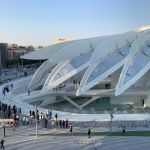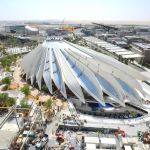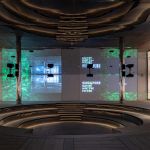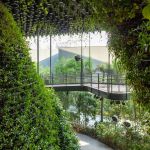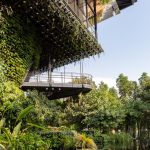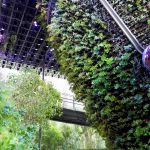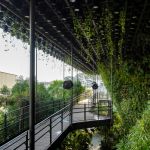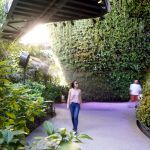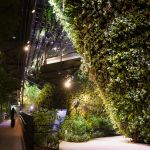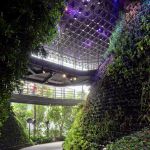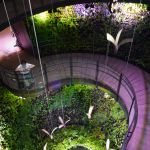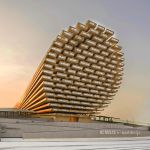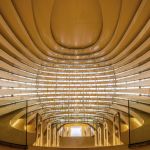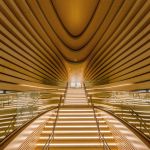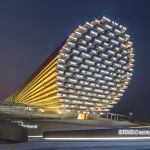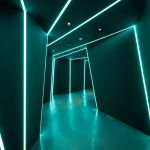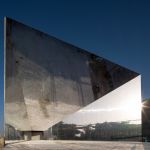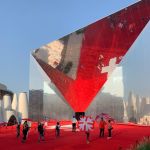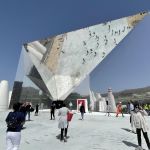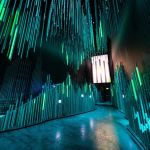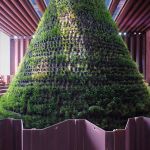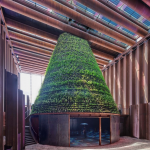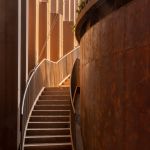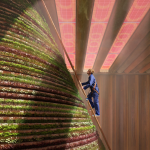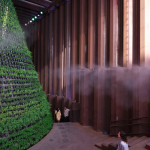
The 10 most beautiful pavilions of Expo 2020 in Dubai
From the Italian one of Carlo Ratti to the monumental waterfalls of the WET Water Feature
October 8th, 2021
Dubai's Expo 2020, which opened in early October, has concentrated the best of architecture and design from around the world. After the interruption of preparations last year due to the lockdown, the universal exhibition was opened with a ceremony last September 30 that saw the public intervention of Sheikh Mohammed bin Rashid Al Maktum and an international concert that included Andrea Bocelli, Andra Day and the Chinese pianist Lang Lang, among others. To comply with the four-year cadence, the year of the event remained 2020 and was not updated. Spread over an area of 438 hectares, just under 4 and a half square kilometers, between Dubai and Abu Dhabi, the general project was signed by the American studio HOK and has a central square called Al Wasl from which three macro-areas each dedicated to the three themes of Opportunity, Mobility and Sustainability branch off. In addition to the pavilions of each country, there are about twenty of them installed by national organizations, partners of the Expo itself and dedicated to special projects.
The pavilions are many and beautiful – but for those who do not have time to look at them one by one, nss magazine has prepared a list of the 10 most beautiful pavilions of Expo 2020 in Dubai.
1. The Saudi Arabia Pavilion by Boris Micka Associates
The Saudi Arabian Pavilion was designed by the BMA studio and is the largest in the entire Expo – as well as the most high-tech. With its cantilevered structure, the structure seems to emerge diagonally from the garden that surrounds it and has an audiovisual system integrated into the external facades and the floor of the square below on which images flow, optical illusions are created and also scenic settings are created for presentations and events. The glass façade doubles as a canopy, keeping visitors in the shade in line for entry. When the integrated screens are turned off during the day the façade becomes a monumental mirror that reflects the entire square. At the intended the exhibition is organized as a hyper-immersive digital journey into the history and culture of Saudi Arabia.
2. The Italian Pavilion by Carlo Ratti Associati e Italo Rota Experiment
The Italian Pavilion was designed by CRA-Carlo Ratti Associati and Italo Rota Building Office, together with Matteo Gatto and F&M Ingegneria. The focus of the project was the circular economy, in line with the theme assigned to the country, and implemented a reconfigurable architecture concept. Orange peels, coffee, algae and sand were the materials used in the construction of the structure that resembles a desert tent, bordered by a monumental curtain made of recycled plastic ropes and with a curved roof created from boat hulls for the roof. The interior is a large open space, decorated with large pools of water and vertical gardens with exhibition paths inside and also areas equipped to host meetings and conferences.
3. Il padiglione del Giappone di Yuko Nagayama/NTT Facilities
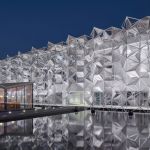
Dedicated to the theme of connection, the Japanese pavilion designed by Yuko Nagayama's studio is composed of a three-dimensional lattice of latex sheets that is inspired by the origami and traditional geometric patterns of Japan and Arabia – emphasizing the similarity of the two cultures. The structure of the pavilion, together with the swimming pool that surrounds it create a natural air conditioning system, which exploits only the wind, shade and surrounding humidity.
4. The Alif Pavilion by Foster + Partners
The Mobility Pavilion, called Alif (from the first letter of the Arabic alphabet) has a curved rib structure designed to evoke movement. The entire building is clad in highly reflective stainless steel that reflects the entire surrounding landscape making the surface of the structure seem alive. There is also an amphitheater and a stage in the square around the pavilion that will host events and public events such as symposia and talks. Internally, the tripartition of the building corresponds to three exhibition areas. The entrance is in the center and is equipped with the largest elevator in the world, able to hold more than 160 people, which takes visitors to the third floor from which you then descend through the various galleries to the basement. The entire structure is also completely sustainable, able to cool down by reflecting light and generate energy with solar panels.
5. The Sustainability Pavilion by Grimshaw
Officially called Terra, the permanent pavilion dedicated to the macro-theme of sustainability was designed and built by the English architecture firm Grimshaw. It is a self-sustaining structure capable of generating energy and collecting water. Inside, Terra contains 6,000 square meters of exhibition spaces covered by earth roofs and shaded by a giant suspended dome similar to the branches of the Ghaf or Loong Tree, which is the national plant of the UAE, made of 97% recycled steel and covered with over 1,055 solar panels that, along with the other eighteen structures below, they are capable of producing 4 gigawatts of electricity in a year. All facilities are also capable of collecting rainwater and dew which is then filtered and recycled through the surrounding garden.
6. The United Arab Emirates by Santiago Calatrava
The pavilion designed by Calatrava for the United Arab Emirates is located in the area dedicated to the theme of Opportunity. The entire design is inspired by the founding values of the country it represents: starting from its shape, which takes up that of the falcon, the national animal of the UAE; up to the technological innovation that animates the four-storey structure, a symbol of innovation and pioneering. The pavilion's carbon fiber wings can open to reveal solar panels underneath – and all of the wings can be opened in about three minutes. Inside the pavilion there is a sphere that houses a 200-seat auditorium surrounded in turn by a system of platforms and walkways dedicated to exhibitions and events.
7. The Singaporean Pavilion by WOHA Architects
The Singapore Pavilion designed by WOHA Architects and landscape design studio Salad Dressing aims to be the demonstration of how to achieve sustainable urban planning by bringing together architecture, nature, technology and culture. Under the title Nature.Nurture.Future, the pavilion re-imagines the appearance of a hypothetical Singaporean building according to the City in Nature concept. With over 170 varieties of plants from different Singapore habitats and set within different layers of greenery, from hanging gardens to vertical walls, the pavilion creates a three-dimensional green space, transforming tropical rainforests, mangroves and even rivers into architecture. Drinking water produced through the on-site solar desalination process is used for drip irrigation, minimizing water consumption. Finally, three different prototypes of climbing robots cross the green walls, inspect plant health and collect environmental data.
8. The United Kingdom Pavilion by Es Devlin
The British pavilion conceived by the artist and stage designer Esmeralda "Es" Devlin is a monumental wooden sculpture on whose front façade flows a continuous poetry generated by an AI that creates the flow of words by mixing and recombining the inputs inserted by the visitors at the entrance. The structure is designed to emphasize the growing importance of algorithms in our society but also the multiculturalism of the United Kingdom, symbolized by the union of different words. Inside, there is also a soundscape created by the traditional choirs of the various ethnic groups living in the country.
9. Il padiglione della Svizzera di OOS con Bellprat Partner e Lorenz Eugster
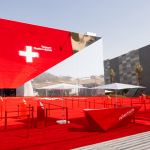
Reflections is the official name of this pavilion signed by the architectural firm OOS. If from the outside its appearance is reminiscent of the classic Bedouin tent but in a hyper-reflective version, passing inside, visitors will not only be able to see the landscape of Switzerland inside, along with exhibitions and exhibitions that will tell the values of the country and the state of its technological advancement. After passing the mirrored façade, you will enter a crystal gallery that leads into a dark room where you can experience the soundscape of the Swiss mountains and observe a digital exhibition that explores nature and the main attractions of the country.
10. The Dutch Pavilion by V8 Architects
The Dutch pavilion is one of the most spectacular because it brings to fruition the idea of self-sustenance that underlies many of the Expo's ideas of sustainable architecture. The name of the pavilion is Biotope and it has an integrated system for water collection, cultivation and creation of clean energy. Its technology extracts moisture from the desert air and uses it to irrigate a conical-shaped vertical garden used to grow edible plants and even mushrooms, thanks to its ability to create an indoor microclimate. The solar panels are the main source of energy of the structure while the water collected thanks to the technology of Sun Glacier falls inside the cone like a waterfall even reaching 800 liters per day.
Bonus: WET Design's Water Feature
The Water Feature is not even a pavilion itself, yet it is the most visible monumental installation of the entire Expo and is located at its center, in the Al Wasl Plaza. The Water Feature is also an impressive and beautiful work, a sort of circular arena with curved walls thirteen meters high from the top of which rhythmic waterfalls of water fall during the day that pour towards the ground but which, at the height of visitors, disappear between the holes of the rock without a trace. At night the show is repeated, only that the waves rise to the top instead of descending defying the laws of physics. At the center of the installation then there is a fiery circle whose flames burn changing colors and shades. The result was obtained by the Californian studio WET Design who organized the water choreography using supercomputers and coordinating with Ramin Djawadi, the composer of the Game of Thrones soundtrack, for the musical accompaniment of the show.





































.jpg)










.jpg)



















































































